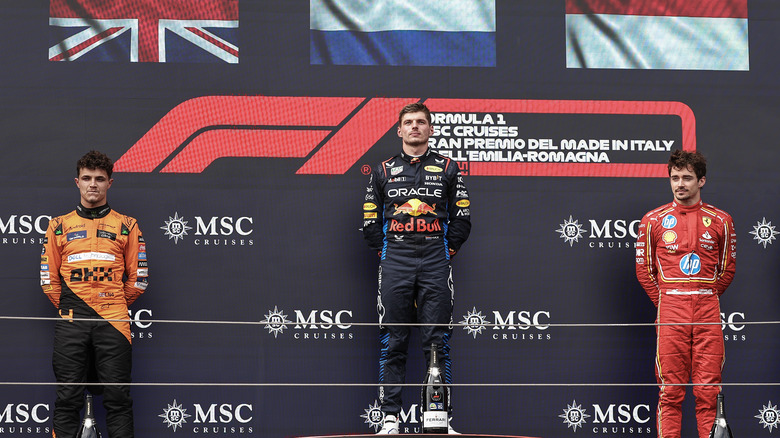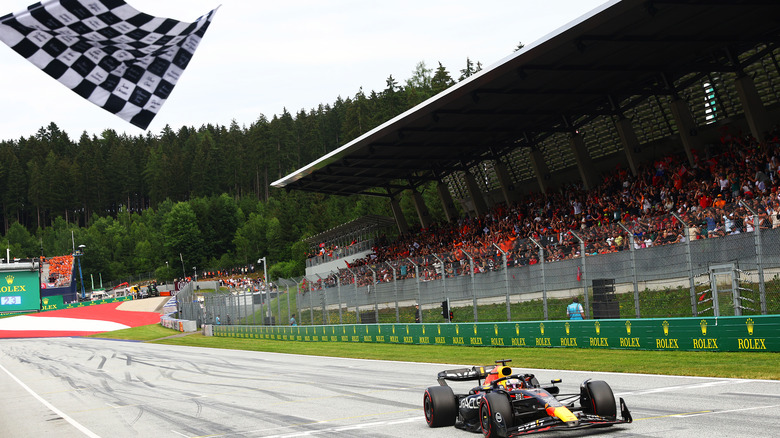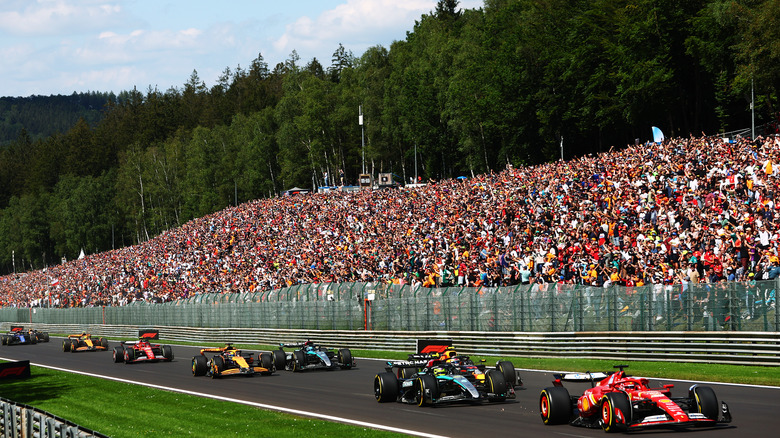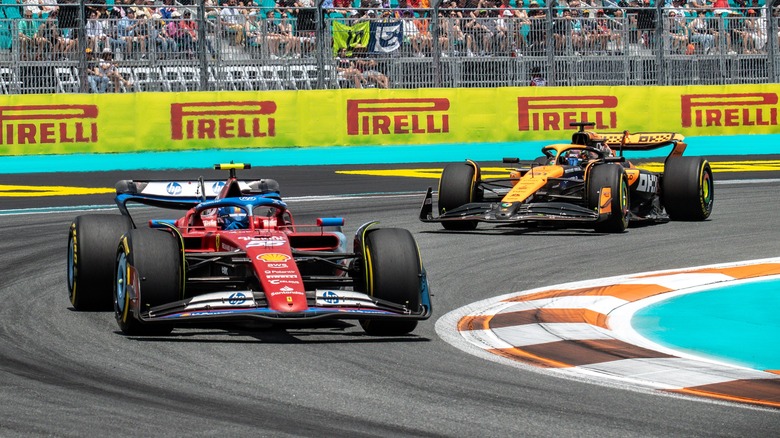F1 Points System Explained: How It Works (And How It's Changed)
This weekend's Formula 1 Dutch Grand Prix marks the series' return from the annual summer break, and Red Bull's Max Verstappen will look to snap a four-race winless streak — his longest since 2020 — in his home country's race. The three-time defending champion won four of the season's first five contests and looked to be well on his way to a fourth straight driver's title, but his mid-season slump and a recent surge by McLaren's Lando Norris has turned this season's championship fight into a bona fide battle with 10 races left in the season.
Going into this weekend's action, Verstappen's lead over Norris stands at 277 points to 199, with Ferrari's Charles Leclerc in third with 177. The Formula 1 points system is used to award the driver's and constructor's titles, and has undergone a few changes since the first F1 race at Silverstone in 1950. After you've had a chance to take a look at everything you need to know about Formula 1 racing and studied our ranking of the best Formula 1 drivers of all time, you might be curious to know more about its complex point system. We're here to unravel this intricate system and discuss how it's evolved along with the sport over the 70 years since its first race.
The top 10 finishers in each race earn points on a descending scale
The Formula 1 grid is currently made up of 10 teams, with two entries each. The points accumulated by a team's two cars are combined to determine the constructor's champion, and teams are allowed to use up to four different drivers over the course of a season. Points are awarded to the top 10 finishers at each race as follows: 25 points for a race win, 18 for a second-place finish, 15 for third, and 12, 10, eight, six, four, two, and one for the remaining top 10 drivers.
F1 also started running short Sprint races on Saturdays in 2021, and now holds six such events each year. The top eight finishers in each sprint race also earn points: eight for first, seven for second, and so on down to one point for the eighth-place driver. The driver who turns in the fastest lap in Sunday's race also earns a bonus point if they finish in the top 10. If they finish 11th or worse, no bonus point is awarded. And no fastest lap bonus point is given out in Saturday sprint races.
The current F1 points system has been in place since 1991
The Formula 1 points system has changed a few times over the years. Initially, only the top six finishers earned points. The winner got 10 points, and subsequent finishers earned six, four, three, two, and one. From 2003 through 2009, points were given to the top eight finishers in a 10-8-6-5-4-3-2-1 allocation. The current system was adopted for the 2010 season, when there were 24 cars on the grid. After HRT folded in 2012 and Manor left the grid just before the 2017 season, this points system remained in place. Haas' entry in 2016 marked the last time F1 had more than 10 teams, but there could be an 11th joining the fray soon.
Last fall, the International Automobile Federation (FIA), the governing body that oversees many of the world's motorsport series, approved a bid from Andretti Formula Racing to enter F1. Andretti Formula Racing is headed by former Indycar champion Michael Andretti, the son of 1978 F1 champ Mario Andretti and the owner of the Andretti Global Indycar team. Earlier this year, Formula 1 rejected Andretti's bid to join the grid in 2025 or 2026, but left open the possibility that it could happen in 2028. This move came amid a concern that Andretti's General Motors power unit could not be competitive right away, and that Andretti's $200 million anti-dilution fee would not offset the economic impact to existing teams.
The FIA is considering a new points system for 2025
Even though there likely won't be an 11th team joining F1 for at least a couple of years, the FIA is considering a significant change to the points system in the meantime. One idea that has been floated around is to expand the points awards from the top 10 to top 12 finishers, keeping the allocations for the top seven places the same and awarding points for spots eight through 12 on a 6-5-4-3-2-1 basis.
There has even been conversation lately about awarding points to all of a race's finishers. Many team managers who have spoken publicly are clearly in favor of expanding the points system, with some of them explaining that it reflects the increased balance in the field and keeps the stakes high late in races. "I think the system needs to be looked at," Aston Martin team principal Mike Krack told Motorsport. "We are not any more the purists that we were for these many years. ... Personally, I think there always needs to be something to fight for, wherever you are."



